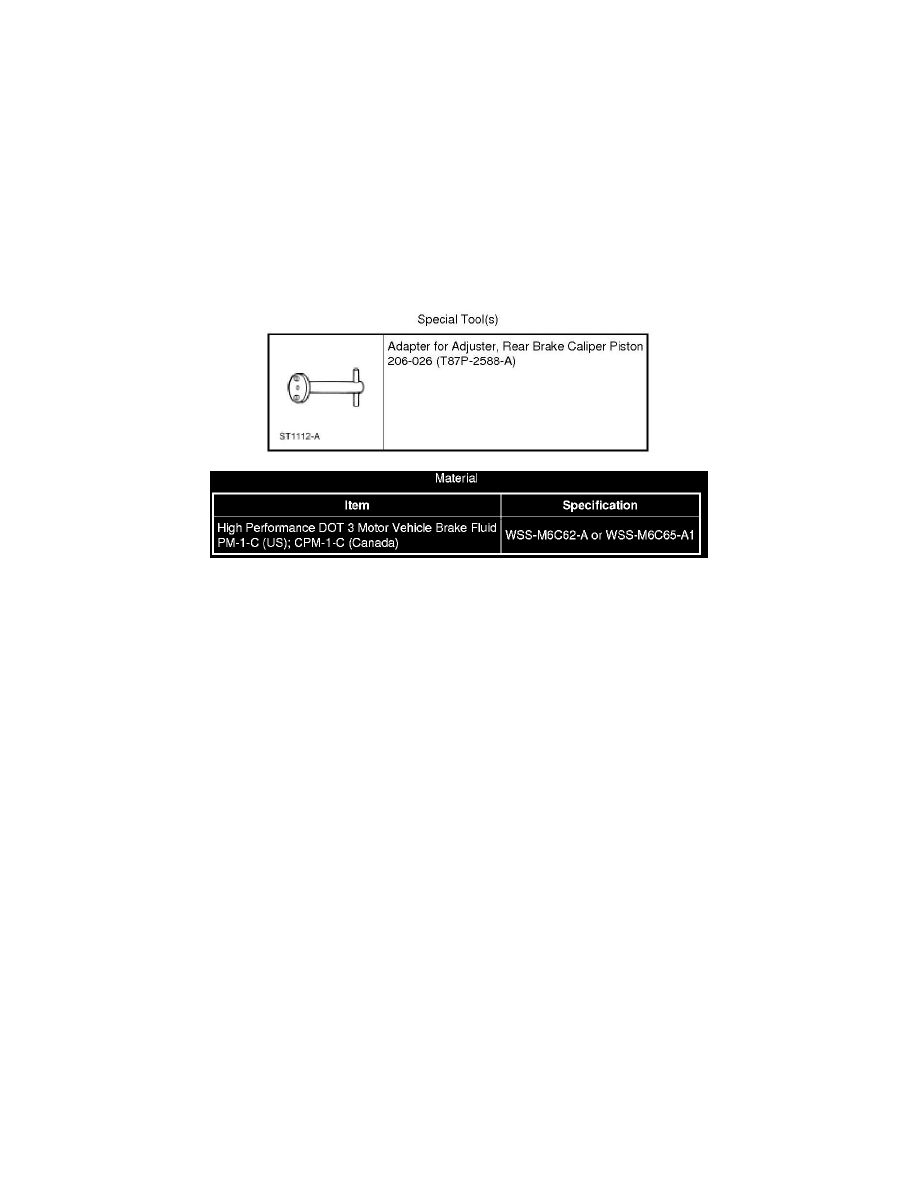Fusion FWD V6-3.0L (2009)

-
Tighten to specifications, refer to Specifications.
6. Bleed each brake tube at the brake master cylinder as follows:
1. Have an assistant slowly pump the brake pedal, and then hold firm pressure on the brake pedal.
2. Loosen the rear-most brake tube fittings until brake fluid comes out. While the assistant maintains pressure on the brake pedal, tighten the
brake tube fitting.
3. Repeat this operation until clear, bubble-free fluid comes out.
4. Refill the brake master cylinder reservoir as necessary. Repeat the bleeding operation at the front brake tube.
Rear Brake Caliper
Component Bleeding
Rear Brake Caliper
WARNING: Do not use any fluid other than clean brake fluid meeting manufacturer's specification. Additionally, do not use brake fluid that
has been previously drained. Following these instructions will help prevent system contamination, brake component damage and the risk of
serious personal injury.
WARNING: Carefully read cautionary information on product label. For EMERGENCY MEDICAL INFORMATION seek medical advice.
For additional information, consult the product Material Safety Data Sheet (MSDS) if available. Failure to follow these instructions may result
in serious personal injury.
WARNING: Do not allow the brake master cylinder to run dry during the bleeding operation. Master cylinder may be damaged if operated
without fluid, resulting in degraded braking performance. Failure to follow this instruction may result in serious personal injury.
NOTICE: Do not spill brake fluid on painted or plastic surfaces or damage to the surface may occur. If brake fluid is spilled onto a painted or
plastic surface, immediately wash the surface with water.
NOTE: When any part of the hydraulic system is disconnected for repair or installation of new components, air can get into the system and cause spongy
brake pedal action. This requires bleeding of the hydraulic system after it is correctly connected. The hydraulic system can be bled manually or with
pressure bleeding equipment.
NOTE: Due to the complexity of the fluid path within the rear integral parking brake calipers, it may be necessary to follow this procedure when new
calipers are installed.
1. NOTE: This procedure is necessary only when installing a new rear brake caliper. To bleed the brake system, refer to Brake System Bleeding
See: Brake System Bleeding.
Remove the wheel and tire.
2. Remove the 2 brake caliper guide pin bolts and position the brake caliper aside.
